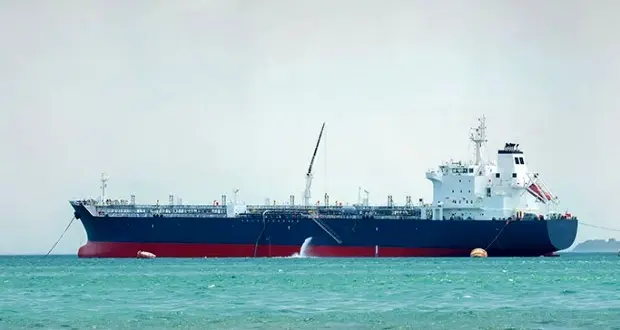INTERCARGO addresses BWM possibilities and impossibilities

TIN news: INTERCARGO welcomes and supports the Ballast Water Management (BWM) international initiatives and legislation however, it should be recognised that the implementation needs to be made in the most effective and practical manner possible. Therefore, the Association has issued a paper providing its insights on the current relevant developments that much concern the shipping community.
Considering that a newbuilding vessel case is totally different than retrofitting an existing vessel, while a bulker carrier is also a different case than other types of ships, INTERCARGO cites some of the technical and operational difficulties faced by bulk carrier owners and operators.
NB vs Exisiting Vessels – Bulk Carrier Technical & Operational Challenges
The introduction of type approved treatment equipment to bulk carriers, particularly the existing fleet, brings its own unique considerations and challenges that remain unrecognised by the regulators;
Availability of Type Approved Systems: insufficient
Currently there are 69 Ballast Water Management Systems (BWTS) that have received Type Approval Certification by their respective Administrations. It is important to highlight that this does not mean that a ship owner or shipyard has a choice of 69 different systems.
From a new building perspective, not all the systems are suitable due to the treatment capacity of some of the systems i.e. a number of the listed Ballast Water Treatment systems are not able to treat the water at the same rate as required by the ship’s ballast system to enable normal ballasting operations. Compared to most other vessel types, bulk carriers together with tankers and gas carriers tend to have a larger ballast capacity with pumps of higher capacity.
The existing fleet is confronted with even greater challenges than those faced by new builds. In addition to the lack of suitable systems discussed previously, bulk carriers have less choice due to the size limitations imposed by available space and also by the additional electrical powering requirements imposed by these systems compared to the available power onboard.
Gravity Discharged Top Side Tanks: an inevitable sacrifice?
The world bulk carrier fleet is by far the largest single sector by deadweight tonnage and a significant portion of the fleet utilises the highly energy efficient gravity discharge system for the topside ballast water tanks unique to bulk carriers.
On those vessels which use the gravity discharge system, the Top Side Tanks are typically filled from the fire main, not from the ballast line and are discharged directly overboard, which of course is incompatible with the requirements for the obligatory discharge monitoring and secondary discharge treatment required to reach the performance standard or for neutralisation of any chemicals used in the treatment process.
UV Systems generally require a secondary treatment phase at discharge to achieve the required D-2 standard and thus to fit this type of system on bulk carriers with gravity discharged top side tanks is extremely challenging because of the technical obstacles and financial burden associated with altering the existing arrangements onboard a vessel.
It is not possible to simply connect the Top Side Tanks to the Double Bottom Tanks as the structure of the lower tanks, particularly the Hopper Tanks, is not able to support the rise of pressure due to the additional head of water without additional strengthening of the tanks. It has been estimated that the additional weight, in the form of stiffeners, collar plates and brackets, would amount to between 50 and 200 tonnes depending on the vessel size. The considerable modifications, damage to and the repair of the ballast tank coatings also increases the scope of work that will need to be carried out.
Connecting the Top Side Tanks to each other, via a valve, and then piping back to the Engine Room brings its own problems such as penetrating the Engine Room forward bulkhead and running ballast piping through fuel tanks. There will also be problems with effective emptying of tanks due to trim, which may lead to operational difficulties during loading and unloading.
A third possibility is to connect each Top Side Tank to the ballast main in the double bottom/duct keel. In addition to modifications to existing pipework, fitting of pipe supports, new penetrations through watertight boundaries and repairs to the existing ballast tank coating system, isolating valves would need to be fitted to each new branch of the ballast line.
Fitting a common ballast discharge line through the Top Side Tanks with cross valves to each tank is an option; however this would also lead to major modifications including penetrations through the Engine Room bulkhead, other tight bulkheads, fitting of pipe supports and damage to the ballast tank coatings.
On top of the difficulties associated with the discharge, gravity discharged Top Side Tanks are not filled by the ballast line serviced by the ballast pump but are filled using the fire main and general service pump. Therefore, a second treatment system would be required to treat the uptake of the general service pump, either that or a major modification to the fire main so that ballast water entering the fire main is passed through the ballast water treatment system.
Most chemical treatment systems require monitoring of the discharge and then a chemical neutralisation phase and with these systems the same challenges faced with fitting a UV System would also apply. There are, however a limited number of chemical treatment systems which treat on the uptake only but modifications described previously would need to be carried out.
In addition to the major modifications that would be required, the advantages of gravity discharged tanks would be lost, these advantages include; a) Faster ballasting and de-ballasting; b) Less electrical energy used; c) Less wear and tear on the existing pumps and piping; and d) Effective tank stripping.
Find out more by reading INTERCARGO’s paper on BWMC















![AIRBUS A380 [MORE THAN 600 PASSENGER’S CAPACITY PLANE]](https://cdn.tinn.ir/thumbnail/4jCp4EQvCU0b/IjHVrSYQrIAqIzXuTzADR7qLYX4idQT4nfq__26E5SCUPLMqfhWkWajvuO9Wfq1ql1TjV4dhkrHliNQU82kMpo2NNftT_NGEwHc9KXtN_rk731bmifa2IQ,,/airbus-a380-structure1.jpg)

Send Comment